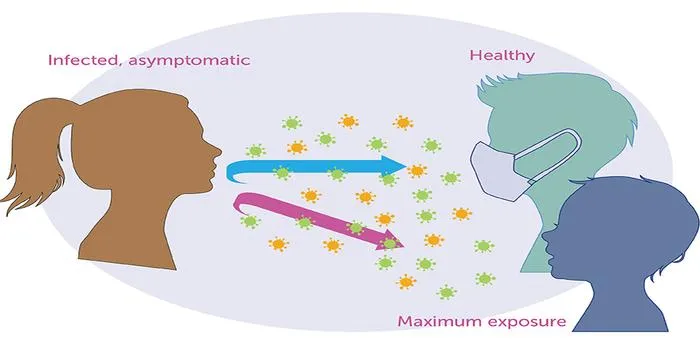- Home >
- Science
- > Technology
7 of the World’s Most Poisonous Mushrooms
Throughout the world, various mushrooms pose significant danger due to their toxic properties. The Death Cap is notorious for causing the majority of mushroom poisoning fatalities. The Destroying Angel is equally lethal, often mistaken for edible varieties. Autumn Skullcap contains deadly toxins that can lead to organ failure. The Deadly Dapperling is deceptively charming but highly poisonous. Fool’s Conecap can cause severe gastrointestinal distress. The Panther Cap has hallucinogenic properties alongside its toxicity. Lastly, the Jeweled Death Cap is both aesthetically appealing and perilous.

1. Amanita phalloides (Death Cap)
The ''Death Cap'' mushroom is responsible for the majority of mushroom-related fatalities worldwide. This highly toxic fungus contains potent toxins called amatoxins, which can cause severe liver and kidney damage. Symptoms typically appear 6 to 12 hours after ingestion, and include nausea, vomiting, and abdominal pain. If untreated, the ''Death Cap'' can lead to death within days. Always be cautious when foraging for mushrooms, as this species closely resembles some edible varieties.
2. Amanita virosa (Destroying Angel)
The ''Destroying Angel'' is another deadly member of the Amanita genus. Characterized by its white cap and stem, it contains the same lethal amatoxins as the ''Death Cap''. Consumption can result in acute liver and kidney failure, often leading to death. Symptoms can take up to 24 hours to manifest, which can make it particularly insidious. People should avoid consuming wild mushrooms unless they are absolutely certain of their identity.
3. Cortinarius orellanus (Fool’s Webcap)
The ''Fool’s Webcap'' is notorious for its delayed symptoms, which may not appear for several days after ingestion. This mushroom contains orellanine, a toxin that can lead to kidney failure and other serious health issues. Symptoms include gastrointestinal distress, fever, and fatigue. Because it resembles edible mushrooms, foragers must exercise extreme caution when identifying this species.
4. Gyromitra esculenta (False Morel)
Commonly known as the ''False Morel'', Gyromitra esculenta is often mistaken for the highly sought-after morel mushroom. However, it contains gyromitrin, a compound that can be converted into toxic substances in the body. Consumption can lead to symptoms such as nausea, vomiting, and in severe cases, neurological damage. Cooking does not eliminate its toxicity, making it crucial to avoid this mushroom entirely.
5. Inocybe spp. (Inocybe Mushrooms)
Inocybe mushrooms are a diverse group that includes several highly toxic species. Many contain muscarine, a potent toxin that can cause salivation, sweating, and respiratory distress. Some species can lead to severe gastrointestinal symptoms, and while fatalities are rare, they can occur. Identification of ''Inocybe'' mushrooms can be challenging, and amateurs should steer clear of all varieties.
6. Amanita muscaria (Fly Agaric)
The ''Fly Agaric'' is not the most lethal mushroom, but it is highly psychoactive and can cause hallucinations. While not typically fatal, it contains ibotenic acid and muscimol, which can lead to a range of symptoms, including vomiting, dizziness, and confusion. Caution is advised, as its bright red cap with white spots makes it one of the most recognizable mushrooms. Misidentification can lead to serious health risks.
7. Conocybe filaris (Deadly Conocybe)
The ''Deadly Conocybe'' is often confused with edible mushrooms and contains the same deadly toxins as the ''Death Cap''. Its appearance can vary, but it generally has a brownish cap and a slender stem. Symptoms can take hours to manifest and may include severe gastrointestinal distress, followed by liver and kidney failure. Due to its resemblance to edible species, it poses a significant risk for foragers.
Comparison Table of the World’s Most Poisonous Mushrooms
| Mushroom Name | Toxin | Symptoms | Time to Onset | Fatality Risk |
|---|---|---|---|---|
| Amanita phalloides | Amatoxins | Liver & kidney failure | 6 to 12 hours | High |
| Amanita virosa | Amatoxins | Liver & kidney failure | 24 hours | High |
| Cortinarius orellanus | Orellanine | Kidney failure | Days | Moderate |
| Gyromitra esculenta | Gyromitrin | Neurological damage | Varies | Moderate |
| Inocybe spp. | Muscarine | Respiratory distress | Varies | Low to Moderate |
| Amanita muscaria | Ibotenic acid, muscimol | Hallucinations | Varies | Low |
| Conocybe filaris | Amatoxins | Liver & kidney failure | Hours | High |
In conclusion, understanding the dangers associated with these ''poisonous mushrooms'' is crucial for anyone interested in foraging. Always consult reliable resources and experts before consuming wild mushrooms, as misidentification can lead to severe health consequences or even death. By educating yourself about these toxic species, you can enjoy the beauty of the natural world while minimizing risk.












